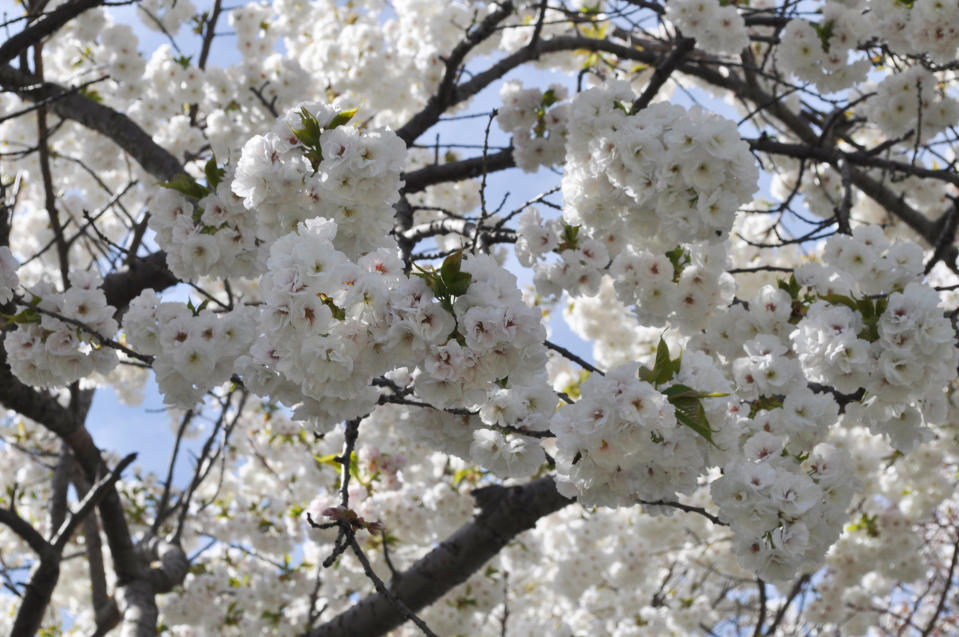How to replace Washington's famed cherry trees?
In many parts of the country, you don't have to look far to see cherry trees in bloom in coming weeks. Still, more than half a million visitors annually embark on a spring pilgrimage to Washington, D.C., to see the ones there.
Besides sheer profusion, those cherries have history. They were a gift from Japan as thanks for our help during the Russo-Japanese War of 1905. Howard Taft was secretary of war then; he was president when the first cherry tree was lowered into the ground in 1912 by his wife, Helen.
AGING TREES
Alas, no tree lives forever, and those original cherries have been succumbing to age despite efforts to coddle them along. It wouldn't seem right to stick just any old cherry trees into the ground to replace those that fail. After all, these particular trees symbolize a bond with Japan and have stood witness to history. Besides, there are a number of different cherry species and varieties — not even all pink-flowered, or double-flowered or weeping cherries are the same.
The 3,000 or so trees sent as a gift in 1912 were mostly Yoshino cherry trees. Yoshinos are hybrids of unknown parentage, and come in a number of varieties, among them those with pink flowers and upright habit (Afterglow), white flowers and weeping habit (Pendula), and diminutive size and weeping habit (Shidare Yoshino).
The earliest replacements for ailing trees around the Tidal Basin were made in the 1930s and were of a Yoshino variety called Akebono ("Daybreak"), which has double, pink flowers.
THE CLONING SOLUTION
In recent years, efforts were made to replace ailing trees with genetic replicas of the originals. Such trees would be exactly the same as the originals, only younger. Genetic replicas are created by cloning, which involves taking cuttings from the original trees and rooting them to make whole new ones.
Rooting cuttings from an 80-year-old tree is not easy, because cuttings generally root most readily from so-called juvenile wood. Where do you find juvenile wood on an 80-year-old plant? In sprouts near the base, the original part of the plant.
Since not all of the original Yoshino cherries were identical, efforts have also been made to "fingerprint" them, using their DNA to better identify and differentiate them. The greater the genetic diversity that is found the better, because a narrow gene pool makes any planting more likely to be wiped out by pest problems.
Some of those original cherries are not even Yoshinos but so-called Japanese cherries, another species with a similar range in varietal characteristics. Kwanzan is perhaps the most famous variety of Japanese cherry.
A BETTER CHERRY?
A few other ornamental cherry species exist, and the one I'd plant would be Higan cherry. Unfortunately, Higan is not counted among those trees originally set in the ground around Washington's Tidal Basin. While cherries generally are susceptible to a number of insects and diseases, Higan is one of the most pest-resistant. It is also longer lived, faster growing, and more tolerant of heat and cold than the others.
Higan cherry's qualities do not sacrifice beauty. Like other ornamental cherries, Higan varieties show a range of ornamental characteristics. For instance, the variety Whitcomb has horizontal, spreading limbs that each spring are dotted with pink buds that unfold into almost white blossoms. Pendula is a variety offering very early, single pink blossoms on weeping stems. Autumnalis is truly unique, not for its semi-double pink blossoms that unfold in spring, but because it often puts on a repeat performance in autumn.
___
http://leereich.blogspot.com/
http://leereich.com/


